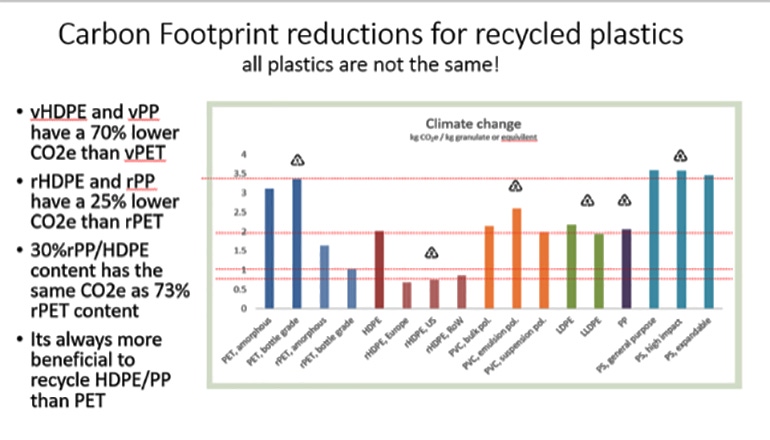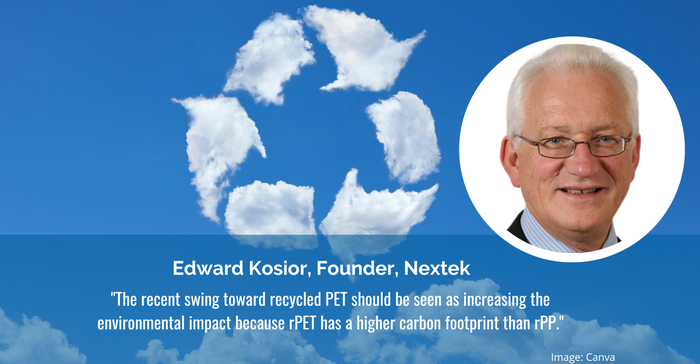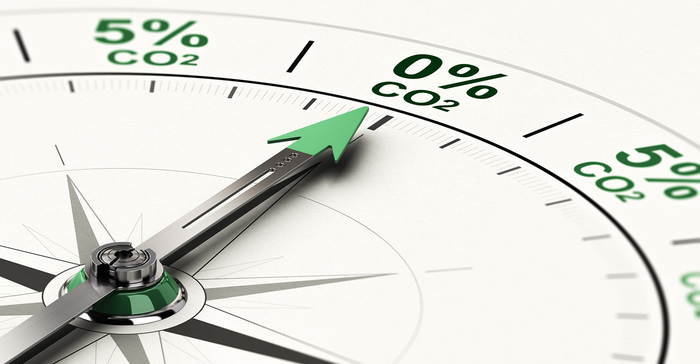Polypropylene Recycling Venture Sets 2023 Launch in the Americas
NextLooPP shows that polypropylene recycling reduces the carbon footprint by more than PET/rPET as its food-grade rPP program comes to the US.
May 11, 2023

The latest report on the climate crisis by the Intergovernmental Panel on Climate Change (IPCC) highlighted the dire consequences if we don’t drastically address the issue of CO2e in our atmosphere.
It’s a warning bell to the world that reminds us that the time to act is now. This scientific consensus, combined with the fact that most climate solutions to avoid the worst consequences of climate change are already available, provides a unique opportunity to address gaps and take immediate action.
The plastics and packaging industry can make a significant contribution by boosting efforts to reduce the carbon dioxide equivalent (CO2e) associated with their sector.
Every tonne/1.1 ton of recycled plastic saves at least one tonne of CO2 and in the case of food-grade recycled polypropylene (FGrPP), an estimated 1.6 tonne/1.8 ton of CO2e can be saved compared with using virgin polypropylene resin.
We can all agree this is worth pursuing, which is precisely what we have been doing since the launch of NextLooPP Europe in 2020. Together with 48 major organizations that have joined our project, we are on track to produce a world-first food-grade recycled polypropylene that is FDA and EFSA approved.
We believe it will have a dramatic impact on reducing our CO2e. Our motivation is knowing that a single 20-kiloton-per-annum (ktpa)/22.1-ton recycling plant would save 32,000 tonnes/35,274 tons of CO2e annually.

Why NextLooPP is laser-focused on recycling polypropylene.
PP comprises up to 20% of global plastics production, a figure that’s growing 6% yearly. In 2018, 56 million metric tons/61.7 tons were produced valued at $97 billion. It has been estimated that by 2025 we will be producing 83 million metric tons/91.5 tons worth $147 billion. PP is present at a critical percentage of the packaging stream which means it can be readily recycled once it is collected.
Notably, the biggest market for consumer-focused plastics is food packaging and PP plays an invaluable role in protecting and storing food. It is most often used for single-serve containers such as soup cups, ice cream tubs, and takeaway food containers. The FDA-approved food contact polymer is microwave safe. It’s also nonvolatile, meaning that it will not react with any type of food whether acidic, basic, or in liquid form.
The downside of food-grade PP is that until recently we have been unable to produce recycled food-grade polypropylene (FGrPP), which means that all PP food packaging is made from virgin plastics.
These complexities are a global challenge that have partly been driven by industry’s focus on recycling PET drink bottles and single-use plastics such as bags and straws.
Our perspective on recycling should be guided by the carbon footprint.
With the acceleration of climate change it is vital to update our perspective on recycling. Recycling of packaging has historically focused on making them into lower value products. We now have the technological know-how to recover and remake plastics into products of equal value. This simultaneously reduces waste our reliance on virgin resources.
Having leveraged patented technologies to sort and then decontaminate post-consumer PP packaging, NextLooPP Europe is now turning post-consumer PP packaging into high-quality food-grade resins.
Moving from linear to circular mindset compels companies to work through consumer pressure and increasingly complex legislation. This should be countered with the deep understanding that all future decisions relating to plastics and recycling must be driven by CO2 emissions.

The recent swing toward rPET should be seen as increasing the impact on the environmental because rPET has a higher carbon footprint than rPP. Plastics Europe’s Life Cycle Assessment flagged this when they compared the carbon footprint of a range of different recycled plastics showing that recycled high-density polyethylene (HDPE) and recycled PP have a 25% lower carbon footprint than recycled PET.
Keeping our limited carbon budget top of mind is the driving force of NextLooPP Europe, which is trialing two key grades of its quality rPP, the first of which is a high-purity recycled food-grade PP decontaminated to be food-contact compliant. The second, called INRT, is an innovative high-quality polymer developed specifically for packaging that requires no odor or migration challenges. Applications include cosmetics packaging and low volatile organic compound automotive applications.
Polypropylene recycling in the US has been a missed opportunity…until now.
NextLooPP is setting its sights on replicating this success in the Americas and are inviting expressions of interest as it fine-tunes a game changing. The NextLooPP Americas venture scheduled to launch 3Q of 2023.
This venture will be tailored to respond to the America’s unique requirements.
According to Science Direct, in the US in 2018 approximately 2 billion tonnes/2.2 billion tons of municipal waste was collected against a global recycling rate of 18% or (362 million tonnes/399 million tons). while the rest of the waste was sent to composting/energy recovery, landfill, and the surrounding environment.
Among all waste plastics, PP is one of the most converted polymers, with a market share of about 20% in 2018. However, it is also one of the least recycled (3 to 5%) mainly due to its use in non-bottle packaging, for example cups, tubs, and trays.
The Recycling Partnership’s 2020 State of Curbside Recycling report noted that PP is not broken out as a separate polymer in the US. It has largely been collected curbside and sorted in materials recovery facilities. Many MRFs have specific polymer sorting capacity focused on PET and HDPE because these polymers have a higher market demand and are more widely recognized.
The same report suggests there may be as much as 17 pounds of PP available yearly from a single-family household. This would place PP at higher generation rates than both natural and colored HDPE with total annual PP tonnage generated by US single-family households estimated at 827,000 tons annually.
As NextLooPP Americas venture scheduled to launch Q3 of 2023. Americas gears up to address these challenges it is worth noting that recovering PP will not only reduce waste and our reliance on virgin PP it will also offer increased economic benefit and jobs, importantly, it will contribute towards keeping our carbon budget within a livable range.
If you are interested in this program, please contact us at [email protected].
Edward Kosior, PhD., has more than 45 years’ plastics recycling expertise, split between 23 years as an academic and 23 years working in the industry. Kosior has been instrumental in designing numerous modern recycling plants and patented recycling.
About the Author(s)
You May Also Like




